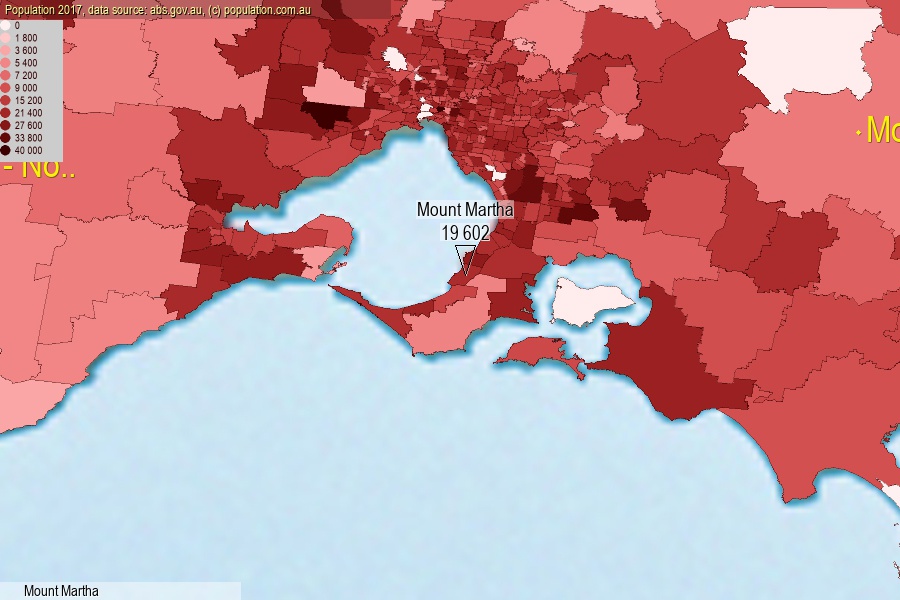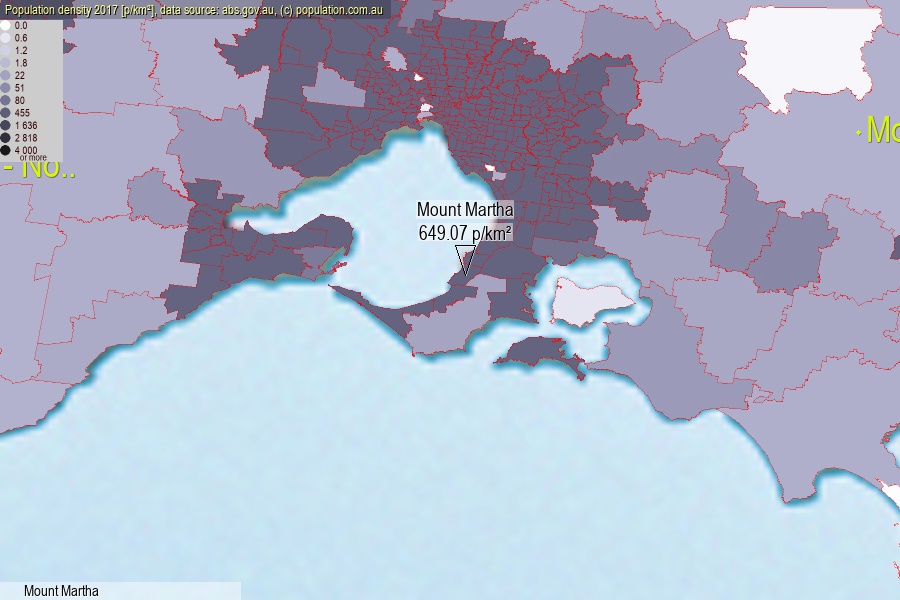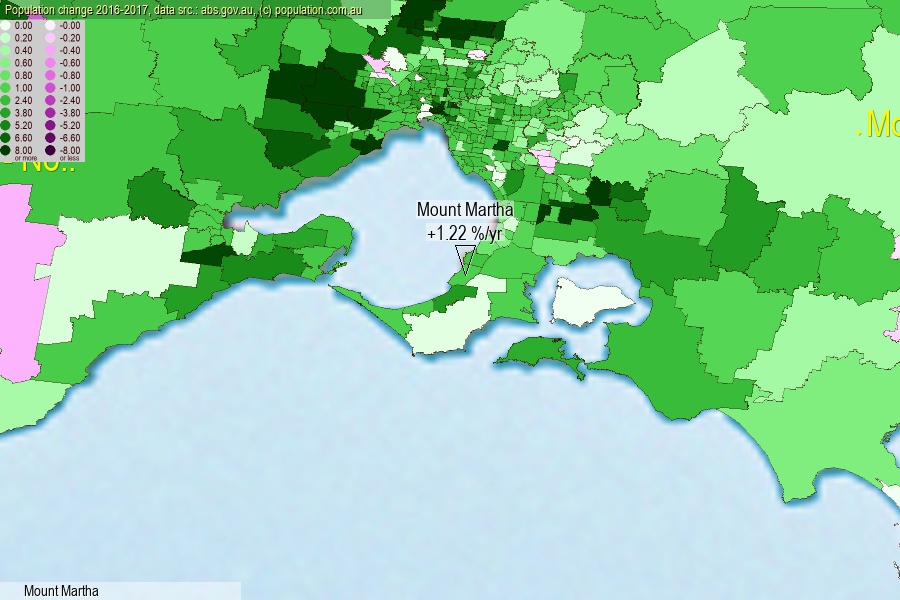 population.com.au
population.com.auLast official estimated population of Mount Martha (as Statistical Area Level 2) was 19 602 people (on 2017-06-30)[2]. This was 0.08% of total Australian population and 0.305% of VIC population. Area of Mount Martha is 30.20 km², in this year population density was 649.07 p/km² . If population growth rate would be same as in period 2016-2017 (+1.22%/yr), Mount Martha population in 2025 would be 21 605. [0]



Click to enlarge. Mount Martha is located in the center of the images.
Population [people], population density [p./km²] and population change [%/year] [2]
View borders » (new window) [4]
[1991-1992] +5.92 %/Yr.
[1992-1993] +3.20 %/Yr.
[1993-1994] +3.17 %/Yr.
[1994-1995] +6.26 %/Yr.
[1995-1996] +3.12 %/Yr.
[1996-1997] +5.12 %/Yr.
[1997-1998] +5.67 %/Yr.
[1998-1999] +5.32 %/Yr.
[1999-2000] +5.55 %/Yr.
[2000-2001] +5.54 %/Yr.
[2001-2002] +4.77 %/Yr.
[2002-2003] +4.98 %/Yr.
[2003-2004] +3.81 %/Yr.
[2004-2005] +3.62 %/Yr.
[2005-2006] +3.14 %/Yr.
[2006-2007] +3.67 %/Yr.
[2007-2008] +3.33 %/Yr.
[2008-2009] +3.29 %/Yr.
[2009-2010] +2.74 %/Yr.
[2010-2011] +1.44 %/Yr.
[2011-2012] +3.14 %/Yr.
[2012-2013] +1.83 %/Yr.
[2013-2014] +2.25 %/Yr.
[2014-2015] +1.01 %/Yr.
[2015-2016] +1.54 %/Yr.
[2016-2017] +1.22 %/Yr.
[0] Calculated with linear interpolation from officially estimated population
[1] Read more about SA2 and Australian Statistical Geography Standard (ASGS) on abs.gov.au
[2] Population data from Australian Bureau of Statistics (Population and density: 2017; change: 2016-2017)
[3] Digital Boundaries: Australian Statistical Geography Standard (ASGS) 2016.
[4] Border coordinates are simplifyed using Ramer-Douglas-Peucker algorithm.